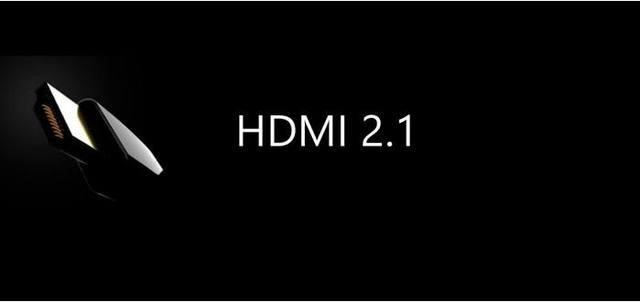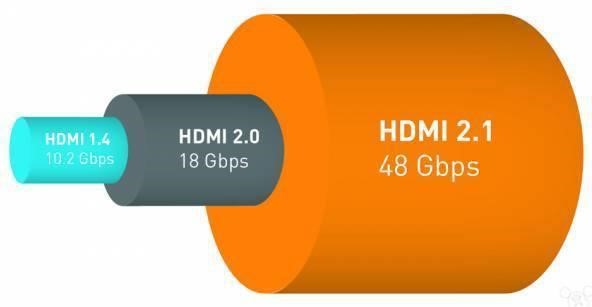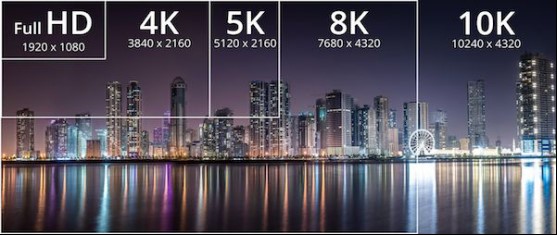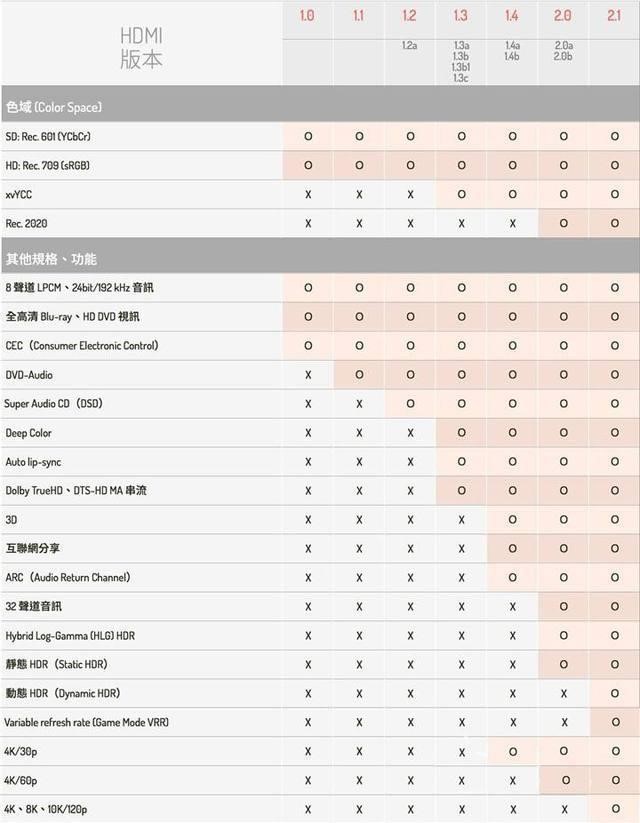
On November 30, 2017, following the HDMI 2.0b, the HDMI Forum officially announced the standard for the HDMI cable officially announced the HDMI 2.1 technical standard. The new standard targets the future video output direction, and supports lossless video with resolutions and refresh rates of 4K/120Hz, 8K/60Hz, 10K, and also supports dynamic HDR. Compared to HDMI 2.0, HDMI 2.1 has increased a lot in broadband, up to 48Gbps.

The biggest difference between HDMI 2.1 and 2.0 is that the new version supports 8K and 10K content transmission. 8K and 10K resolution may be too far away for you, but the HDMI 2.1 standard also enhances 4K resolution output. Now it has been upgraded to support 4K@120fps. The transmission of content. In addition to the resolution that has the greatest impact on image quality, another obvious difference is the improvement in HDR’s high dynamic range. The new HDMI 2.1 standard now supports Dynamic HDR (Dynamic HDR).
More specific figures, the new HDMI 2.1 standard now supports up to 10K@120Hz and supports 4K@120hz. 4K includes true 4K 4096×2160 pixels and 3840×2160 pixels, while in the HDMI 2.0 specification, it only supports 4K@60Hz.

Although there are differences from many previous standards, it is certain that the HDMI 2.1 standard will be backward compatible with HDMI 2.0 and 1.4 standards. The original HDMI 2.0 standard device can be supported by HDMI 2.1 through firmware update (it is still necessary to know the final version). At present, Nikko Industry Co., Ltd has adopted the HDMI2.1 version as the main research and development direction in the near future.

HDMI 1.0
The earliest version of HDMI 1.0 was introduced in December 2002. Its biggest feature is the integration of the digital interface of the audio stream, which is more advanced and convenient than the popular DVI interface in the PC interface at the time. HDMI version 1.0 supports video streaming from DVD to Blu-ray format, and has CEC (consumer electronics control) function, which means that in the application, a common contact can be formed between all connected devices, and the device group can be more conveniently controlled. .
HDMI 1.1
May 2004, HDMI 1.1 version interview. Added support for DVD audio.
HDMI 1.2
The HDMI 1.2 version was launched in August 2005, which largely solved the problems of low resolution supported by HDMI 1.1 and poor compatibility with computer equipment. The 1.2 version of the pixel clock runs at 165MHz and the data volume reaches 4.95 Gbps, so 1080P can be achieved. It can be considered that the 1.2 version solves the problem of the 1080P of the TV and the point-to-point problem of the computer.
HDMI 1.3
In June 2006, the HDMI 1.3 update brought the biggest change to increase the single link bandwidth frequency to 340MHz, and also enabled these LCD TVs to obtain 10.2Gbps data transmission. The 1.3 version of the line has 4 pairs of transmission channels. One pair of channels is a clock channel, and the other three pairs are TMDS channels (minimizing the transmission differential signal), and their transmission speed is 3.4GBPS. Then 3 pairs are 3*3.4=10.2GPBS, which can greatly expand the 24-bit color depth supported by HDMI1.1 and 1.2 to 30, 36 and 48 bits (RGB or YCbCr). HDMI 1.3 supports 1080P; some less demanding 3D also supports (there is no theoretical support, actually some can).
HDMI 1.4
The HDMI 1.4 version already supports 4K, but is limited to a bandwidth of 10.2Gbps, which can only reach 3840×2160 resolution and 30FPS frame rate.
HDMI 2.0
HDMI 2.0’s bandwidth is expanded to 18Gbps, support plug and play and hot swap, support 3840 × 2160 resolution and 50FPS, 60FPS frame rate. It also supports up to 32 channels in audio and up to 1536kHz sampling rate. HDMI 2.0 does not define new data lines and connectors, interfaces, so it can maintain perfect backward compatibility with HDMI 1.x, and existing Class 2 data lines can be used directly. HDMI 2.0 does not replace HDMI 1.x, but is based on the latter enhancements. Any device that wants to support HDMI 2.0 must first guarantee basic support for HDMI 1.x.
HDMI 2.1
The standard can provide up to 48Gbps of bandwidth. For more specific figures, the new HDMI 2.1 standard now supports 7680×4320@60Hz and supports 4K@120hz. 4K includes true 4K 4096×2160 pixels and 3840×2160 pixels, while in the HDMI 2.0 specification, it only supports 4K@60Hz. And each pixel has a color depth of up to 12bit, which is good news for Intel, NVIDA and AMD.
